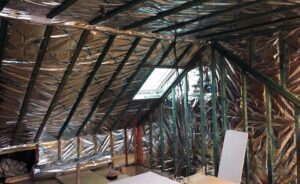
interior design company
Turning a blank space into a place that feels alive and inspiring takes more than just choosing colours or rearranging furniture. It’s about crafting function, mood, and personality into every detail.
When you team up with an interior design company, the process follows a structured path. This path transforms ideas into reality, ensuring your space looks great, feels right, and works effortlessly. Whether you’re reworking a cosy living room, reshaping a sleek boardroom, or revamping a retail shop, each step refines ideas and builds a lasting vision.
Let’s explore the five key steps that guide every design project from concept to completion.
Step 1: First Meeting and Understanding Needs
- Everything begins with a conversation. In this first step, you meet the design team and share your goals. They listen. They ask the right questions. You explain what the space needs to do, how it should feel, and what styles speak to you.
- Designers take note of your space size, who uses it, and your budget. They also study how light moves in the room, what stays, and what must go. This is the time to bring photos, mood boards, or even simple sketches. Every detail helps.
- Most of all, this meeting sets trust. Both sides must understand one another. When that happens, workflows better later.
Step 2: Planning the Design Concept
- Once they gather the details, the designers start drawing the first ideas. These plans include layouts, colours, furniture styles, and finishings. The goal? To capture your vision while solving space issues.
- During this stage, designers often build mood boards and sketches. These help you see how the space will look. At this point, changes are easy to make. You can tweak the plan before it gets fixed.
- This is also where practical matters come in—like choosing lights, deciding on storage options, or finding ways to hide wires. Designers mix beauty with purpose, so each part fits your life or work.
- For example, in corporate office interior design, this stage shapes how teams interact. Do workers need quiet zones? Will clients visit often? Should the meeting room double as a break area? Smart planning answers these questions.
Step 3: Budgeting and Materials Selection
- Once the design concept gets your nod, it’s time to get real about money and materials. Your designer builds a cost breakdown for each part—furniture, paint, flooring, lights, and more.
- This step also includes shopping. Together, you may visit showrooms or go through samples. You feel the fabrics, test the chairs, and choose items that match the plan.
- Below is a simple guide to what you might decide on at this stage:
Sample Checklist of Key Items
| Category | Examples | Choices to Make |
| Walls & Paint | Matte, Gloss, Wallpaper | Colour, Texture |
| Flooring | Tiles, Wood, Carpet | Finish, Feel, Durability |
| Furniture | Desks, Sofas, Cabinets | Size, Material, Look |
| Lighting | Pendants, Wall Lights, Track Lights | Mood, Brightness, Energy Use |
| Soft Finishes | Curtains, Rugs, Cushions | Fabric Type, Pattern, Colour |
This step is key. Without smart choices here, projects fall behind or go over budget. Designers guide you so the plan stays firm and costs stay under control.
Step 4: Build and Execution
- Once all the choices are locked in, workers start the real work. Walls shift. Paint dries. Fixtures appear. The flat plan becomes a space you can walk through.
- Designers often lead this part like conductors. They talk to carpenters, painters, electricians, and movers. They make sure each person knows what to do and when.
- During this time, things might change. Maybe a tile is out of stock. Or maybe a beam hides behind a wall you want to remove. The team will find solutions fast to stay on track.
- In corporate office interior design, this step must move quickly. Offices often stay open during changes. So, work may happen in stages—one room at a time—without stopping the business flow.
- To keep things smooth, designers share updates. They may visit the site often, send photos, and tweak the plan if needed. You stay in the loop and watch the space come alive.
Step 5: Handover and Final Touches
- When the dust settles, you step into your finished space. The last stage wraps up the work and checks every corner.
- Designers walk you through the changes. They show how to care for each piece and fix minor issues. If a handle feels loose or a bulb flickers, they fix it.
- Some firms give a care guide or follow-up plan. That way, you know how to clean your finishes or replace a broken tile.
- In offices, this final stage may include a test run. Teams sit at desks. Lights turn on. Screens work. If all flows well, the handover ends.
Bringing It All Together
Design work feels complex at first. But with the right steps, it becomes clear. Whether for homes or large offices, every good interior project walks the same path: Understand → Plan → Select → Build → Handover.
Quick View of the 5-Step Design Process
| Step | What Happens | Why It Matters |
| 1. First Meeting | Goals shared, site studied | Sets a clear start and builds trust |
| 2. Design Concept | Ideas drawn and shared | Turns vision into workable plans |
| 3. Budget & Choices | Costs shared, materials chosen | Keeps plan real and on budget |
| 4. Build Starts | Work begins on-site | Turns plan into real results |
| 5. Final Handover | Checks and touch-ups done | Ensures space works and lasts |
Tips to Make the Process Smoother
While the design company leads the way, you still steer the journey. Here are smart ways to help:
- Speak up early. Changes cost less in the planning stage.
- Trust the plan. Once it’s set, avoid sudden changes.
- Visit the site often. Seeing things in real time helps.
- Set clear goals. A stylish room should still meet your daily needs.
- Think long-term. Pick pieces that last and styles that stay fresh.
How This Applies to Offices and Workspaces?
- In personal homes, comfort leads. But in work zones, the design must support tasks, teams, and tech. That’s why many firms now invest in corporate office interior design.
- Here, each step becomes sharper. Budgets grow, timelines shrink, and tech must blend in. Meeting rooms must sound right. Desks must fit teams. Colours must spark focus or calm. Designers study all this to make each square foot count.
- The five-step flow stays the same—but the stakes feel higher.
Final Words
Working with a design company should feel like teamwork. You bring your story, ideas, and needs. They bring their skill, creativity, and experience. Together, you craft a space that looks sharp and functions better.
Whether you’re remodelling a flat, reshaping a boardroom, or upgrading a retail store, follow these five steps. You’ll end up with a space that not only looks stunning but also serves, fits, adapts, and lasts for years.





